
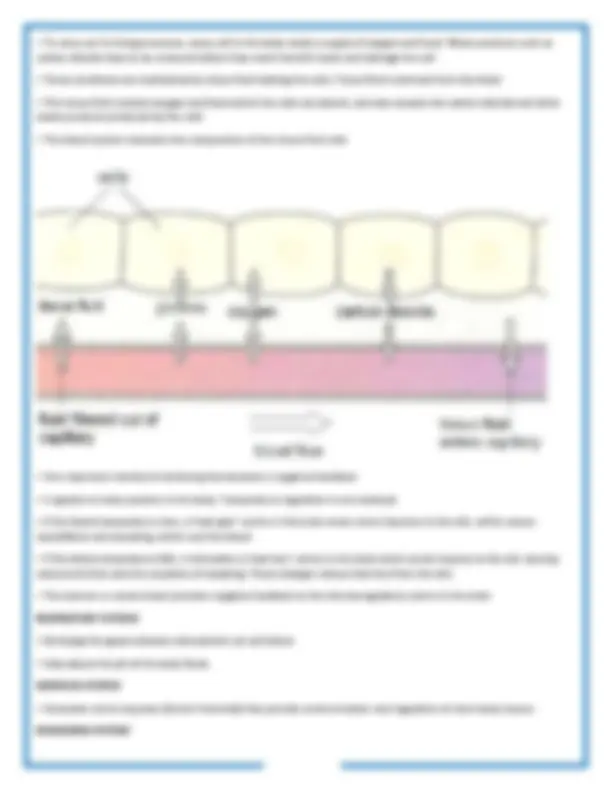
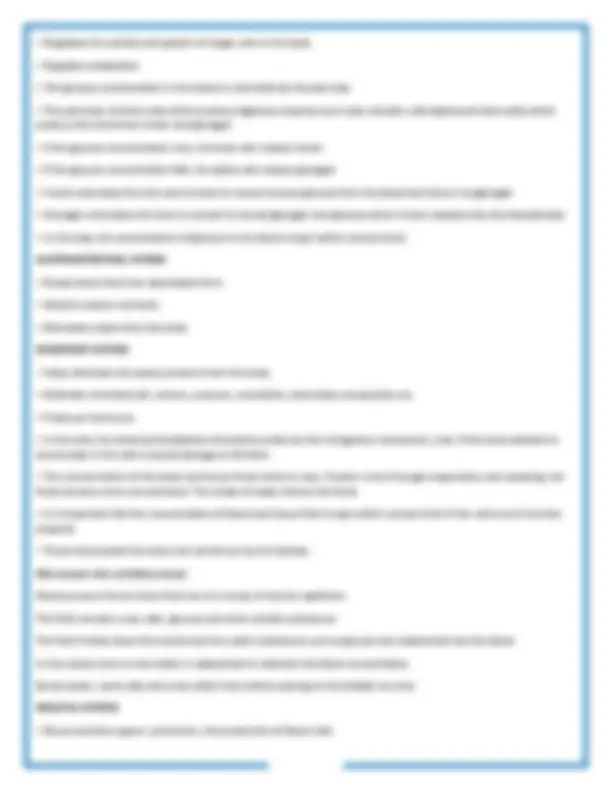
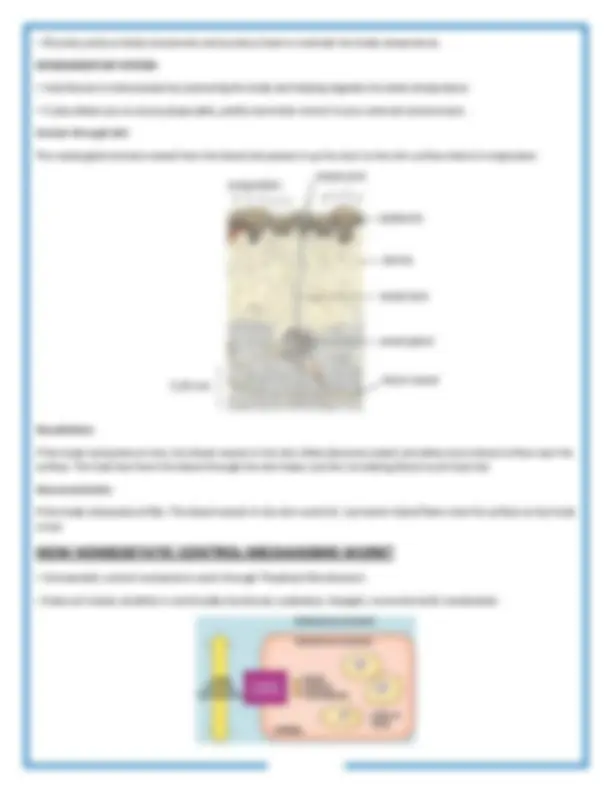
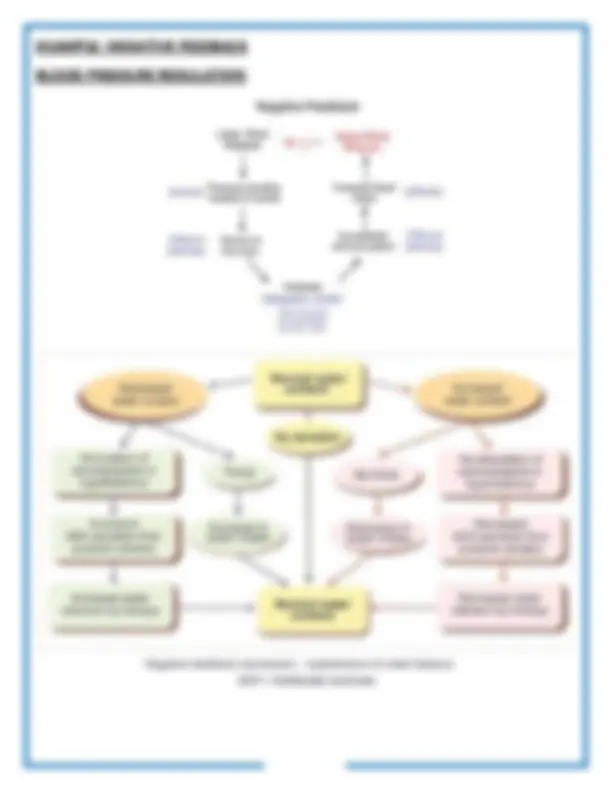
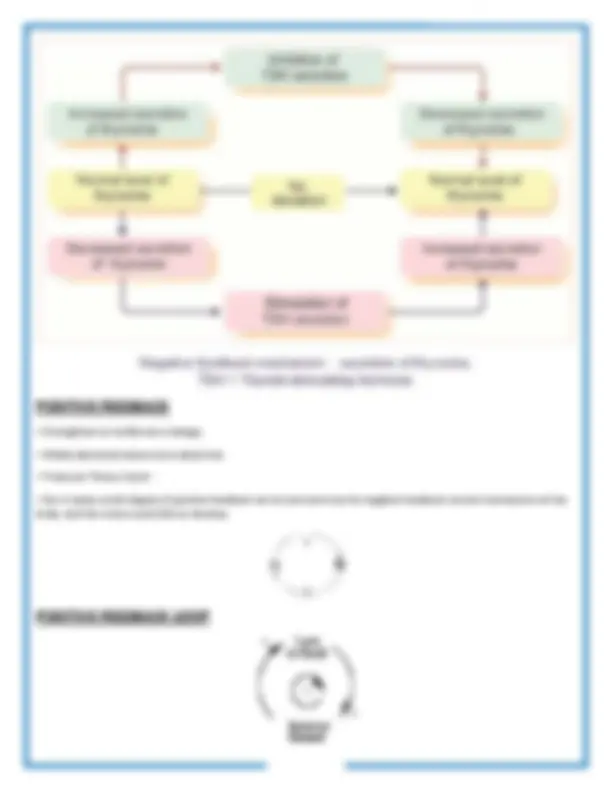
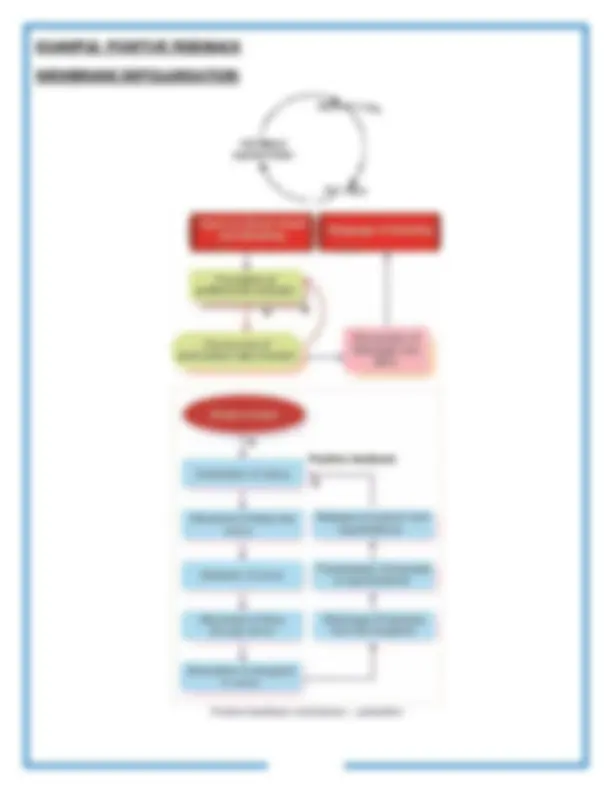


Study with the several resources on Docsity

Earn points by helping other students or get them with a premium plan


Prepare for your exams
Study with the several resources on Docsity

Earn points to download
Earn points by helping other students or get them with a premium plan
Community
Ask the community for help and clear up your study doubts
Discover the best universities in your country according to Docsity users
Free resources
Download our free guides on studying techniques, anxiety management strategies, and thesis advice from Docsity tutors
Homeostasis Notes Human Anatomy and Physiology
Typology: Lecture notes
1 / 11

This page cannot be seen from the preview
Don't miss anything!







At the end of this lecture, students will be able to –
Vasodilation If the body temperature rises, the blood vessels in the skin dilate (become wider) and allow more blood to flow near the surface. The heat loss from the blood through the skin helps cool the circulating blood much heat lost Vasoconstriction If the body temperature falls. The blood vessels in the skin constrict. Less warm blood flows near the surface so less heat is lost